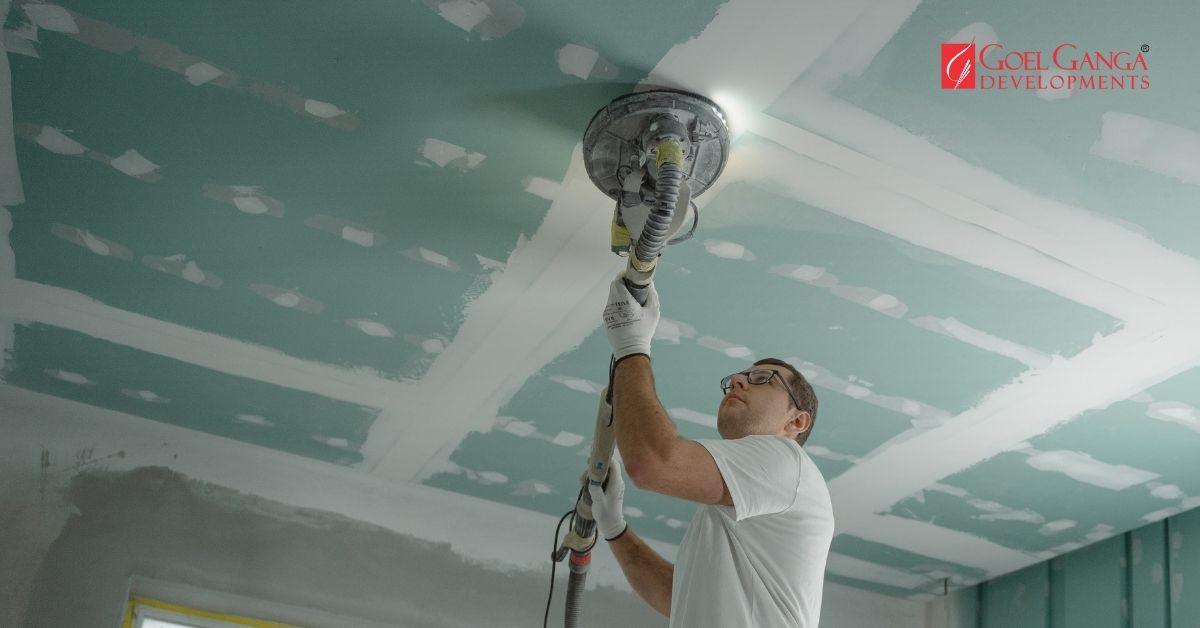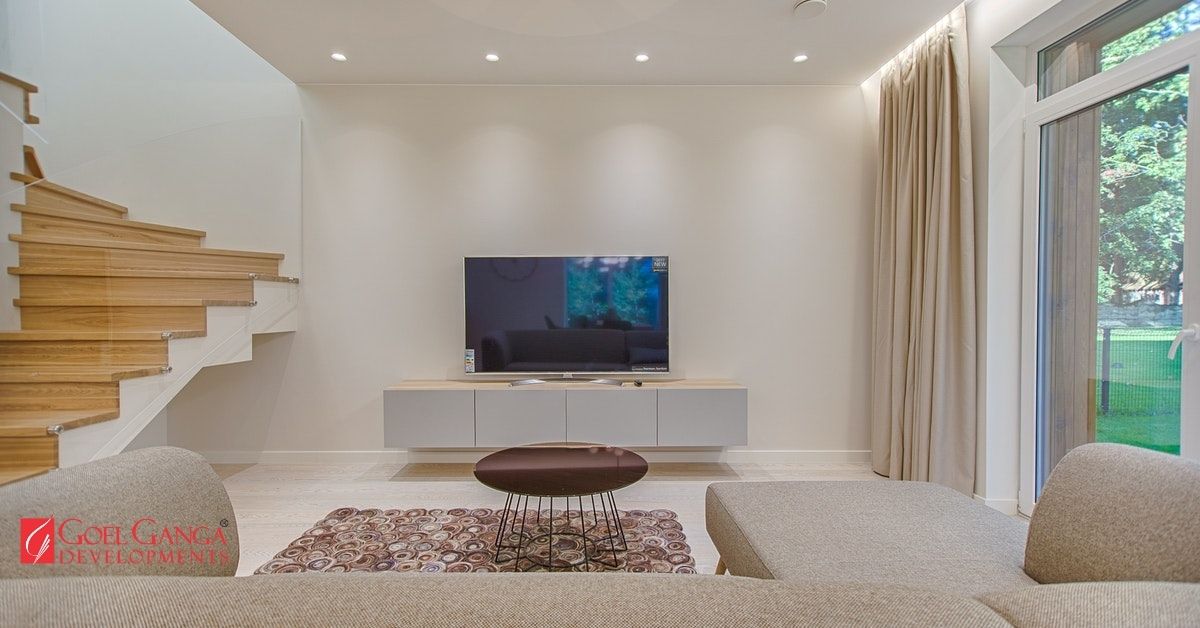Gone are the days of plain and boring ceilings. In today’s times, no home decor is complete without an intricately designed beautiful false ceiling. This type of ceiling not only serves an aesthetic purpose but the less beautiful aspects of construction, like the electrical wirings and AC ducts, are also hidden by this. The false ceiling also helps against noise. Plaster of Paris (POP) and Gypsum are the two most popular materials used in making false ceilings. But these both have cons along with their respective pros. Let us understand their qualities
before moving on to their pros and cons.
Gypsum Board
These are factory-manufactured boards of hydrated Calcium Sulphate. Gypsum boards are also known as Plasterboards. Available in thicknesses of 9, 12, and 15 mm, these boards are usually manufactured in sizes of 4 x 6 feet, 4 x 8 feet, and 4 x 10 feet. The installation of these is very easy and convenient. Their cutting is done according to the required size and then these are fitted on a metal framework, which is then suspended from the ceiling. These boards are not only used in false ceilings but are also used as partition walls in the office
interiors.
Plaster of Paris
This is also known in short as POP and is dehydrated gypsum, which is available in powdered form. It is mixed with water to rehydrate it and then it is poured into the mold, where it again sets as hard gypsum. The liquid paste hardens in about 10 minutes and hardens in the form of interlocking crystals to attain strength and hardness. When making a false ceiling, the POP paste is pasted on a mesh which is molded in the desired shape and then dried. On drying, it achieves its required hardness. This type of ceiling is the best fit for irregular
corners as they are seamless and mouldable.
Following are the pros and cons of each Cost
The gypsum ceiling is more expensive than the POP ceiling. POP False ceiling can be as much as 25% cheaper than gypsum board
Wastage
The dimensions of the gypsum board are fixed. Hence there is a lot of wastage depending on the size and dimensions of the room.
Whereas in POP ceilings, the powder is mixed with water, so there is minimal wastage as the quantity can be mixed according to the requirement.
How to Repay Your Home Loan faster?
Mouldability
The Gypsum sheet is non-mouldable as the board is flat and as such, any cornices have to be made by POP. POP can be molded according to the requirement.
Durability
Gypsum ceilings are extremely durable and can last for years. The POP is equally durable and also lasts for years.
Cracks
The flat surface of the Gypsum ceiling doesn’t crack easily. There is a possibility of cracks developing in the POP ceiling, depending on the
craftsmanship and the required mix.
Finishing
The Gypsum ceilings are flat and hard, hence it has joints that have to be filled and given finishing by using the POP paste.
The POP ceilings are made from a malleable paste, hence its joins are seamless and have a beautiful finishing.
Installation Time
The Gypsum boards are ready-made and they are assembled at the site, hence their installation time is minimal.
The Pop ceilings are made and installed at the site, hence the process is long and laborious.
Labour
For the Gypsum ceilings, highly skilled laborers aren’t required as it is already ready and just need to be installed.
For the POP ceilings, extremely skilled craftsmanship is required, as the ratio of the mix and its application needs attention and precision.

Aesthetics
It is very hard to make Gypsum ceilings in a flowing pattern. The POP ceilings can be made in any shape or form and can be designed
intricately.
Repairs
If repairs are required in a gypsum ceiling, then an entire has to be reinstalled, as the boards are fixed.
Repairs are easy in a POP ceiling and can be done even for a small part of the ceiling.
Thermal properties
Both the gypsum ceilings and the POP ceilings are fire retardant and heat insulating.
So now the question arises as to how to decide which ceiling is best for one? The easy answer to this is if it is a drop ceiling, with a straight-line design, and you want the work finished quickly without worrying about the cost; then you should opt for a gypsum ceiling. However, if you wish for a unique design and are not short of time, then the POP ceiling is the best for you. By incorporating sections of POP on a gypsum board, you can get the best of both styles.









